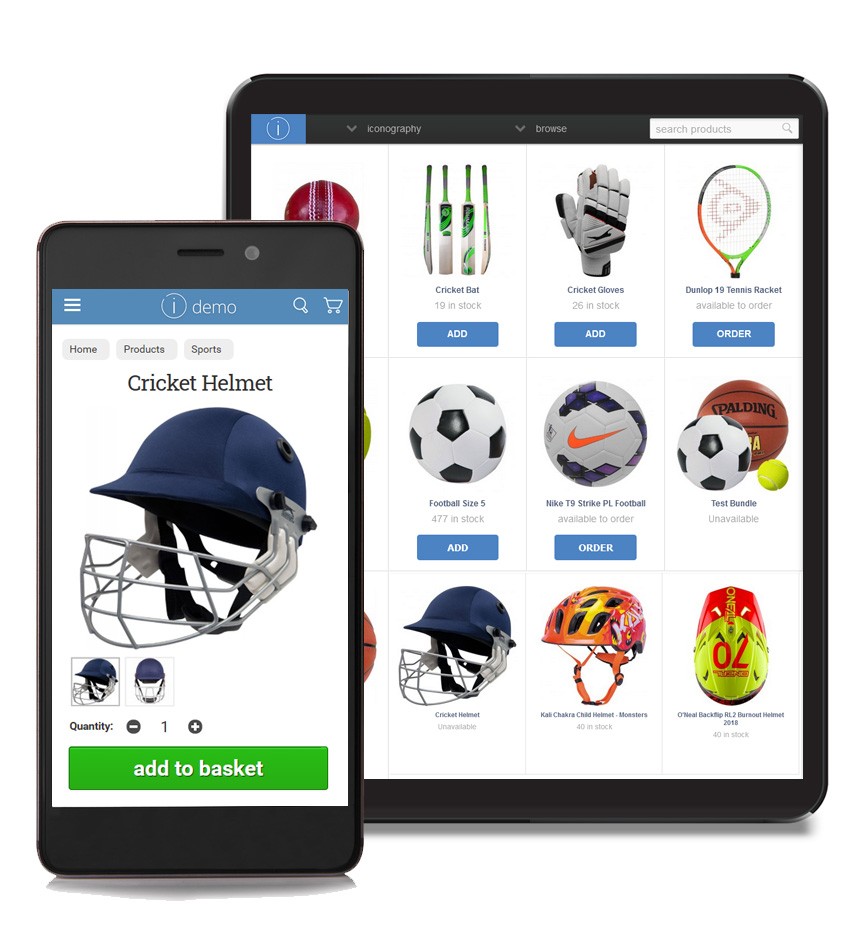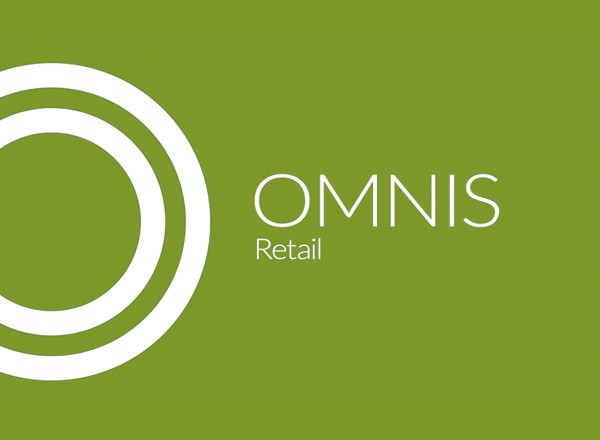Increase retail sales by 10% with an Endless Aisle strategy
Despite the hype, bricks and mortar retail is far from dead. Instore sales in the UK accounted for 80% of total retail sales in 2019. But retailers certainly shouldn’t take this for granted. To remain relevant and to continue attracting shoppers to their stores, retailers must realise that online and offline are no longer separate. They must find innovative ways to merge the two, starting with Endless Aisle.
What is Endless Aisle?
Endless Aisle is best described as a strategy used by retailers to increase instore revenue by selling out-of-stock items and products that are not showcased instore. The delivery of an Endless Aisle can be done through the use of mobile devices used by store assistants and kiosks located on the shop floor for customers to use independently.
One of the ways Endless Aisle helps retailers to generate additional revenue on the shop floor is by enabling them to place orders directly with a supplier for an out of stock item. The item can then be shipped to the customer as if it has come from the retailer directly. This type of drop shipping strategy gives the impression of an Endless Aisle where products never appear to be out of stock.
Similarly, through the use of instore kiosks, customers can browse and buy products that aren’t available instore (or in stock) and have them shipped to their local store or to their home. For shops with limited space and for retailers selling bulky items such as furniture this strategy can add significant revenue to instore sales. It’s also a great opportunity for cross-selling items in the same range and complementary products.
Endless Aisle by Iconography
Did you know that our Unified Commerce platform mixes eCommerce, RMS, CRM and EPoS?
OMNIS Retail comes preloaded with award-winning Endless Aisle technology.
10% of sales in retail stores are lost due to items being out of stock

Retail Management Systems
Does your system support Endless Aisle?
Endless Aisle is about maximising the visibility of your stock holding
Can you afford not to have an Endless Aisle strategy?
It’s clear then that one of the benefits of Endless Aisle is that it gives retailers more control over what the customer sees as in-stock and out of stock. This is significant because a recent report found that 17% of consumers would use their mobile device to make an immediate purchase on a competitors website if a product was out of stock.
In addition, 37% said they would buy that item from an online retailer when they get home and 35% said they would just go to a different store to buy it. In this fast-paced, “I need it and I need it now” consumer landscape simply having an item in stock, or being able to ship it instantly, is enough to win, as convenience becomes a top priority.
The cost of not having an Endless Aisle strategy, and therefore not having products in stock when the customer wants them, can be devastating. A Harvard Business Review study suggests retailers can lose nearly half of intended purchases when customers encounter stock-outs. Those abandoned purchases translate into sales losses of about 4% for a typical retailer, that’s £400,000 of lost sales for a £10m retailer.
Every item, in every warehouse, sold simultaneously at every point of sale
What are the challenges of an Endless Aisle strategy?
An Endless Aisle strategy can certainly help retailers to maximise their retail space, increase their sales and prevent customers from leaving without purchasing. However, actually putting this strategy in place throws up many challenges especially for those that aren’t already offering some kind of omnichannel experience to their customers.
A successful Endless Aisle strategy requires having the right systems and processes in place. Multichannel retailers whose channels are still very much siloed will need to improve their inventory management process otherwise creating an Endless Aisle is going to be tough. These are some of the common challenges faced by retailers when embarking on an Endless Aisle strategy.
Maintaining real-time stock visibility
Critical to Endless Aisle success is having real-time visibility on stock in all locations. A recent retailer survey found that only 19% of retail brands were able to offer Endless Aisle by purchasing inventory from a distribution centre or warehouse, and only 13% could purchase inventory from another store.
To overcome this, retailers should be investing in a unified retail management system that feeds and updates all sales channels and stock locations in real-time. Out-dated systems that rely on integrations can often cause delays in reporting and inaccurate stock figures which severely hinder the success of an Endless Aisle strategy.
Keeping customers updated on their order
It’s all too common to see retailers excel in the early stages of the customer journey by offering out-of-stock or an extended range of products to the customer while they’re in the store. But this is only half of the story and failing to keep the customer updated on their order can jeopardise the whole customer experience.
A Mycustomer consumer survey found that 82% of consumers said it was important that retailers proactively communicate every fulfilment and delivery stage, with 45% saying they track order status by SMS/phone and 85% using email to stay updated.
It’s clear then that for retailers using Endless Aisle to ship directly from suppliers, this challenge will be amplified without the right systems in place to keep the customer updated.
Centralised order tracking
Tied closely to having real-time stock visibility is the need for orders to be managed in one central location. With orders being placed across multiple channels individual channel order tracking simply doesn’t work if orders are being fulfilled from multiple locations.
To be able to update inventory and fulfil orders from any location a centralised order management system is critical. Having this enables retailers to manage orders, stock and shipping irrespective of sales channel and maintain contact with the customer during the dispatch and delivery process.
One retailer saw an overnight increase in sales of over 100%
How to implement an Endless Aisle strategy
The first step for retailers who are keen to implement an Endless Aisle strategy is to review the existing retail management systems that are in place. Having the right systems is fundamental to creating a strategy that works and that will deliver on customer expectations.
Because Endless Aisle is heavily reliant on stock visibility retail chains must know what stock is available and where with a high degree of accuracy. Retailers surveyed for a Forrester report recommend 98% accuracy. That means having a reliable order management system in place that can see and report across all sales channels in real-time.
Choosing the items that will be made available as part of your strategy, and indeed which can be made available is important too. Are all your suppliers able to ship products directly to your customers? Are there products that can only be sold instore and therefore shouldn’t be included in your strategy? Will you add new products once you can offer Endless Aisle capability?
All of these factors play a key role when evaluating and creating an Endless Aisle strategy. This planning phase is not one that should be overlooked in a bid to put something in place quickly. The likelihood is that, without proper planning, Endless Aisle will cause more problems than it solves.
Request a DemoTake advantage of Endless Aisle with OMNIS Retail
Consumers’ desire to shop instore will remain strong for years to come meaning retailers have an obligation to ensure they are delivering the best experience possible in terms of fluidity and convenience. Endless Aisle is one way that retailers can do this with the benefits being elevated instore sales and in the long-run increased customer loyalty.
The key to delivering this is having the right systems and for forward-thinking retailers it presents a huge opportunity to get ahead and meet customer’s purchasing needs. For retailers married to old, incumbent legacy systems and vendors, unfortunately, Endless Aisle will always be a pipe-dream.
OMNIS was born out of the needs of a leading direct to consumer brand to support their online and instore retailing formats in the UK market. They were facing the same problems and challenges that present obstacles for any retailer.
As a progressive and forwarding thinking brand, our client wanted to remove the limitations, constraints and operational inefficiencies associated with integrating an eCommerce website with offline EPoS and legacy back office retail software.
We quickly saw the vast potential OMNIS possessed. It’s a need we’ve recognised with many other retailers and D2C brands that have similar aspirations and want to remove the restrictions of old retail technology and software and leverage new approaches like Endless Aisle.
Request a Demo

Online and instore retail
OMNIS Retail is a pioneering new retail solution that has been driven by D2C brands & niche retailers looking to the future. A single database eliminates any data integration issues between outdated systems, instead providing a cloud-based omnicommerce retail solution fit for the 21st century.
18th August 2020